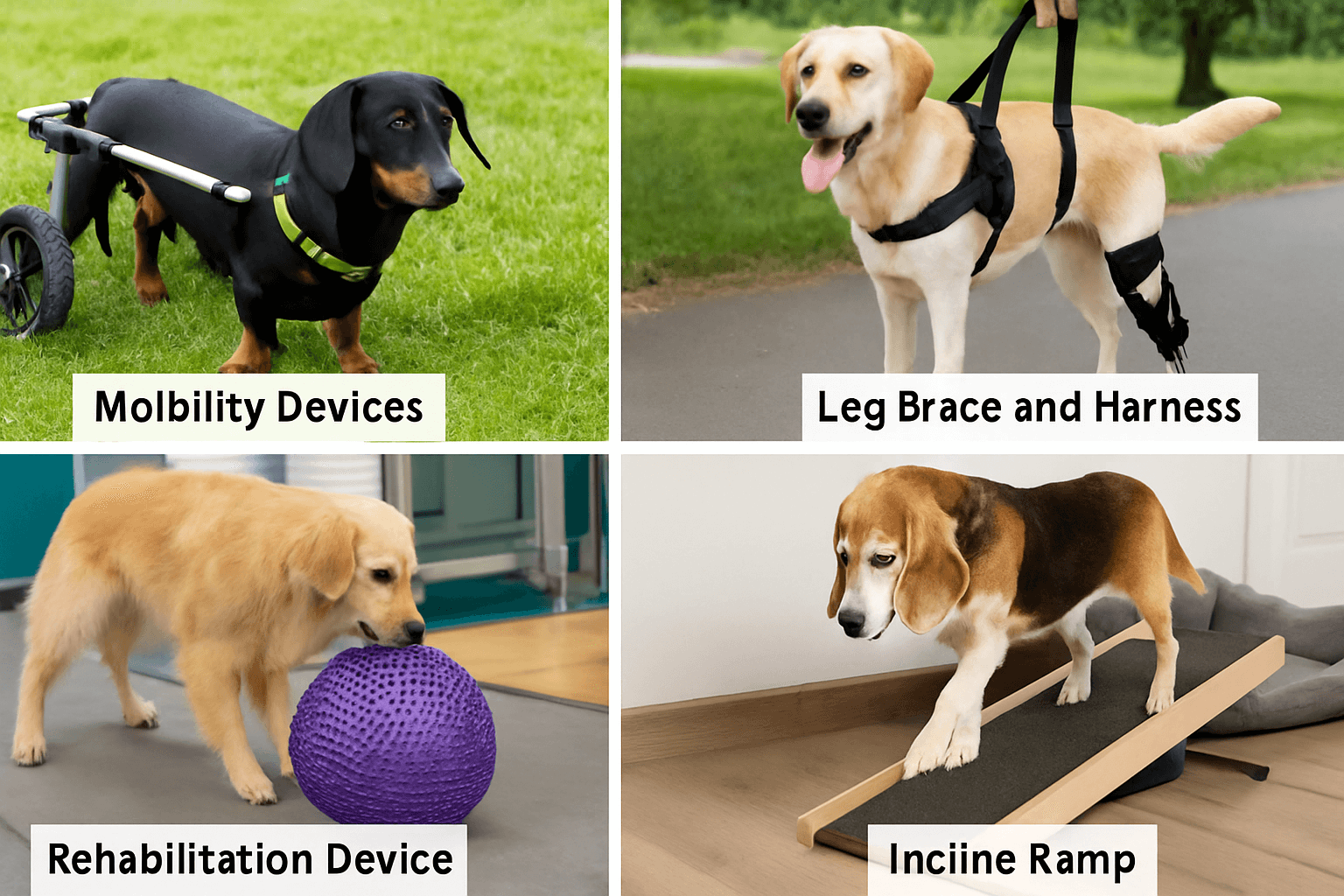Whether your dog is recovering from surgery, managing arthritis, or living with paralysis, seeing them struggle to move can tug at your heartstrings. But here's the good news: mobility devices for dogs have come a long way, and there are more canine mobility solutions than ever to help pups regain their freedom.
As a certified pet blogger and dog mom to a senior Lab named Moose—who's rocked a wheelchair and a support harness—I can tell you firsthand: the right tools make all the difference.
Understanding Canine Mobility Needs
Dogs may need mobility support for various reasons:
- Degenerative myelopathy (DM)
- Arthritis or hip dysplasia
- Injuries (e.g., torn ACL)
- Paralysis
- Post-surgery recovery
Depending on the condition, your vet or canine rehab therapist may recommend one or more devices to support your dog’s quality of life.
Popular Mobility Devices for Dogs
1. Dog Wheelchairs
Also known as mobility carts for dogs, these wheeled devices support the hind legs (or all four legs in some models), allowing dogs with paralysis or weakness to walk or run again.
- Top Picks: Walkin’ Wheels, Eddie’s Wheels
- Best For: Paralyzed dogs, senior dogs with rear limb weakness
- Pro Tip: Make sure the wheelchair is custom-fitted. It can take a few sessions for your dog to get used to it, but the transformation is amazing!
2. Dog Leg Braces and Harnesses
These provide joint stability and walking assistance for dogs recovering from injury or managing chronic conditions.
- Knee Braces: Ideal for ACL injuries or arthritis
- Support Harnesses: Help lift dogs during walks, stairs, or potty breaks
- Brand Examples: GingerLead, OrthoPets, Labra Support Sling
3. Rehab and Support Devices
Veterinary rehab centers often use tools like balance balls, hydrotherapy, and rehabilitation devices for dogs to build strength.
- Toe Grips: Improve traction for senior dogs
- Boots: Protect paws and assist with nerve damage
- Incline Ramps: Help avoid stairs and reduce joint strain
How to Choose the Right Mobility Aid
Every dog is unique, and what works for a senior German Shepherd may not suit a tiny Dachshund. Here’s how to make the right call:
- Consult Your Vet: Rule out pain or conditions needing treatment first.
- Assess Needs: Is your dog paralyzed or just unsteady?
- Measure Carefully: Size and fit are crucial for comfort and effectiveness.
- Start Slow: Introduce devices gradually and reward positive experiences.
“When Moose first tried his rear-support harness, he froze. But after some peanut butter bribes and gentle guidance, he was walking with confidence again within a week.”
Do’s and Don’ts for Using Dog Mobility Devices
- ✅ Do: Regularly check for chafing or pressure points
- ✅ Do: Practice short sessions and increase time gradually
- ❌ Don’t: Force your dog into a device they fear—go slow and make it positive
- ❌ Don’t: Skip regular vet check-ins
Recommended Products & Brands
- Walkin’ Wheels – Adjustable dog wheelchairs
- GingerLead – Support slings for senior dogs
- OrthoPets – Custom leg braces and orthotics
- Ruffwear – Durable harnesses and boots
Final Thoughts
Mobility challenges don’t mean the end of adventure for your pup. With the right senior dog mobility support or paralyzed dog equipment, your furry friend can still enjoy walks, playtime, and tail wags galore. You’ve got this—and so does your dog.
💡 Want to support your dog from the inside out? Check out more healthy treats for dogs that promote joint health!
Frequently Asked Questions (FAQs)
1. What are the best mobility devices for senior dogs?
2. Can a paralyzed dog walk with a wheelchair?
3. Are mobility aids safe for daily use?
4. How do I measure my dog for a wheelchair?
5. Are mobility carts for dogs covered by pet insurance?
6. How long does it take for a dog to adjust to mobility equipment?

About SniffnTail
SniffnTail is your go-to destination for everything pets. From helpful advice, tips, and insights to thoughtfully selected products and resources, we’re here to support pet owners at every stage of their journey. Whether you're caring for a playful pup, a wise old cat, or anything in between, SniffnTail offers tools and knowledge to make pet parenting easier and more joyful.
Related Articles
 Lifestyle • 20-25 mins Read
Lifestyle • 20-25 mins ReadThe Eco-Conscious Dog Parent's Guide: Reducing Your Paw Print
Discover how to be an eco-conscious dog parent with this comprehensive guide from a board-certified veterinarian. Learn about sustainable dog ownership, eco-friendly products, reducing your pet's carbon footprint, and making responsible choices for a healthier planet and a healthier dog. Get expert advice on sustainable pet food, biodegradable waste solutions, recycled dog toys, and much more.
 Lifestyle • 8 min read
Lifestyle • 8 min readBest Interactive Dog Toys for Every Pup Personality
Discover the best interactive dog toys for puppies, aggressive chewers, smart dogs, and more. Expert tips, DIY ideas, and vet-approved options to keep your pup happy and mentally engaged.
 Lifestyle • 7 min read
Lifestyle • 7 min readHow AI Will Change Your Relationship With Your Pet
Discover how AI pet technology is transforming pet care and deepening bonds between pet parents and their furry friends. Learn how AI helps pet owners with nutrition, training, and wellness.

